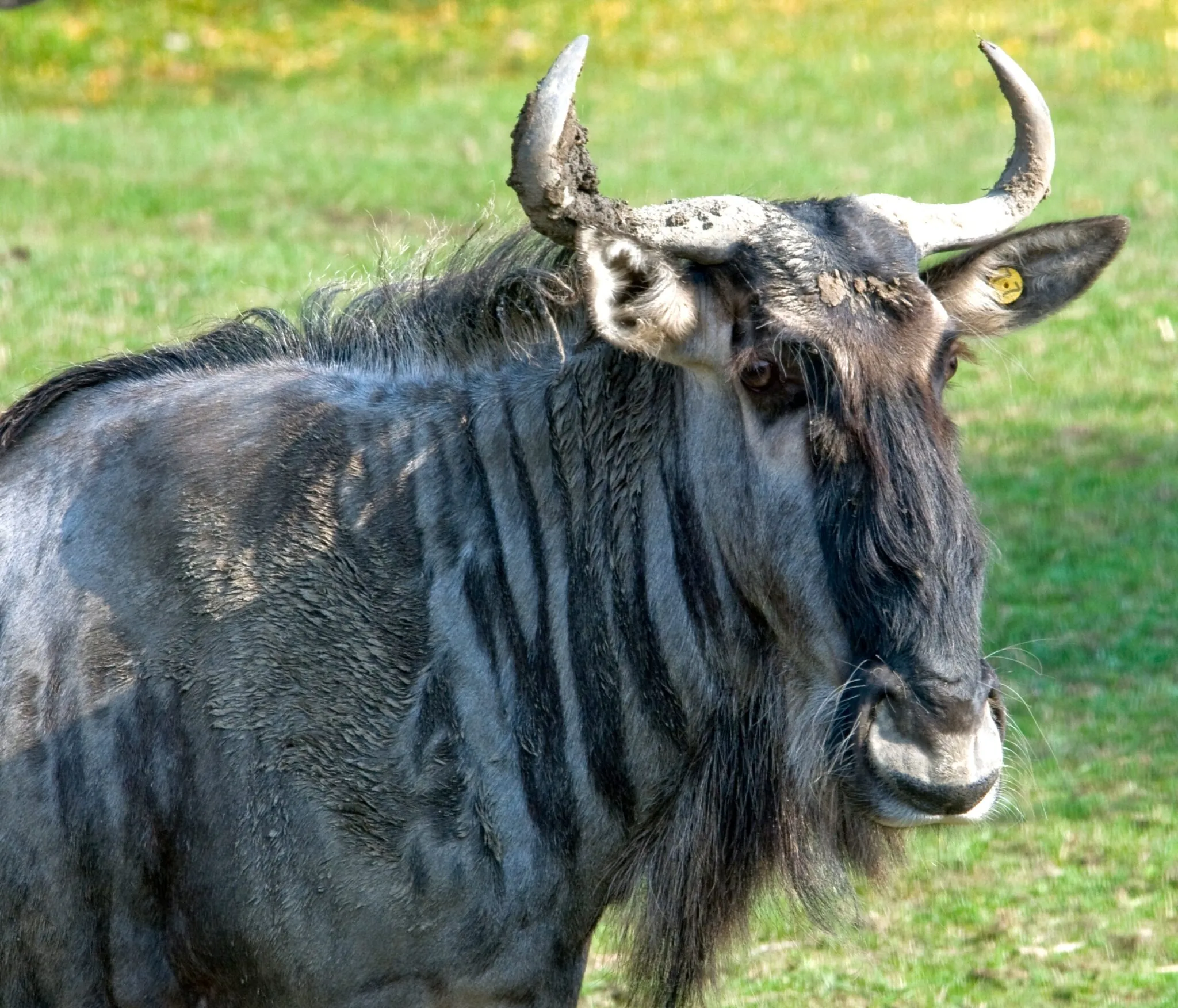-
Menu
- Plan Your Visit
- Meet The Animals
- Check Out Events
- Memberships
- About The Zoo
- Support the Zoo
- Conservation
- Education
- Groups & Private Events
- Zoo News
- Contact
- Indianapolis Prize
- Global Center for Species Survival
- Schedule
- Donate
- Membership
- Tickets

- Plan Your Visit
- Meet The Animals
- Check Out Events
- Memberships
- About The Zoo
- Support the Zoo
- Conservation
- Education
- Groups & Private Events
- Zoo News
- Contact
- Indianapolis Prize
- Global Center for Species Survival

Eastern White-Bearded Wildebeest
Connochaetes taurinus albojubatus
About
Wildebeest is an Afrikaans word that means “wild beast” and is another word for a gnu. Wildebeests (gnus) are large grazing antelope that live for part of the year in small herds of females, their young and one male. But when the seasons change in the grasslands of eastern Africa and water dries up, wildebeests migrate in herds of up to one million animals in search of fresh grasses and plentiful water. Wildebeests graze the land and fertilize it with their waste, making a sustainable habitat that cycles through the wet and dry seasons.
After the rainy season, new calves are born the following year. They are cared for in the protection of their mother and the herd for about 8 months. Wildebeests use both vocalizations and scent to communicate with others in their herd. Calves especially help keep track of their mothers by her smell! Staying in touch helps protect them from predators, such as lions. Wildebeests can live up to 20 years.

Conservation
Wildebeests as a species have a low threat of extinction, but the eastern white-bearded wildebeest has higher population threats than other types. These include habitat loss, human interference and diseases from cattle. Wildebeests rely on a cycle of wet and dry cycles. Changing land use by humans as well as climate change can disrupt the amount of water in different areas.
To help combat climate change, the Indianapolis Zoo participates in AES’s Green Power Offset Program. Indianapolis residents also can help offset carbon that they’re burning in fossil fuels through this program.
WHERE ARE THEY AT THE ZOO?

